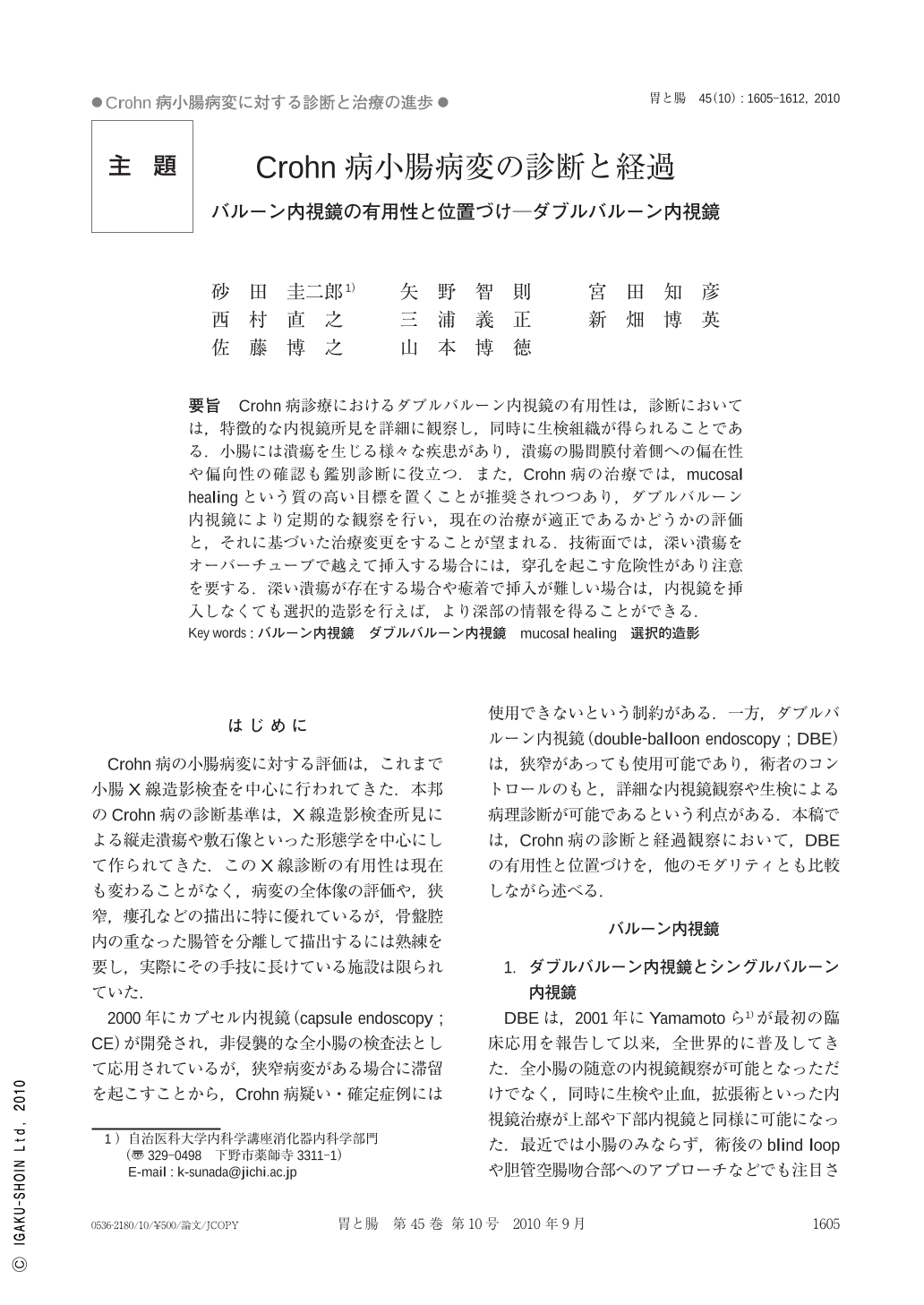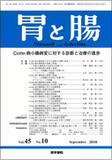Japanese
English
- 有料閲覧
- Abstract 文献概要
- 1ページ目 Look Inside
- 参考文献 Reference
要旨 Crohn病診療におけるダブルバルーン内視鏡の有用性は,診断においては,特徴的な内視鏡所見を詳細に観察し,同時に生検組織が得られることである.小腸には潰瘍を生じる様々な疾患があり,潰瘍の腸間膜付着側への偏在性や偏向性の確認も鑑別診断に役立つ.また,Crohn病の治療では,mucosal healingという質の高い目標を置くことが推奨されつつあり,ダブルバルーン内視鏡により定期的な観察を行い,現在の治療が適正であるかどうかの評価と,それに基づいた治療変更をすることが望まれる.技術面では,深い潰瘍をオーバーチューブで越えて挿入する場合には,穿孔を起こす危険性があり注意を要する.深い潰瘍が存在する場合や癒着で挿入が難しい場合は,内視鏡を挿入しなくても選択的造影を行えば,より深部の情報を得ることができる.
DBE(double-balloon endoscopy)enables us to make detailed observations and at the same time take biopsy samples. Characteristic small bowel lesions observed with DBE in Crohn's disease are aphthoid ulcers, round ulcers, irregular ulcers, and longitudinal ulcers. These ulcers tend to be located on the mesenteric side of the small bowel. Since DBE can determine the location(mesenteric or antimesenteric side)of the ulceration, it is useful in distinguishing between Crohn's disease and other diseases that have ulcers in the small bowel.
Now, there is increasing use of endoscopic mucosal healing as an assessment of treatment response or in predicting the course of the disease is increasing. Thus, endoscopic observation should be performed regularly and appropriate treatment modifications can then be made based on those findings, aiming at mucosal healing.
Attention must be paid to avoid perforation, in cases involving deep ulcers. Instead of inserting the endoscope over the ulcers, selective contrast imaging should be conducted to obtain clear images of deeper parts.

Copyright © 2010, Igaku-Shoin Ltd. All rights reserved.


